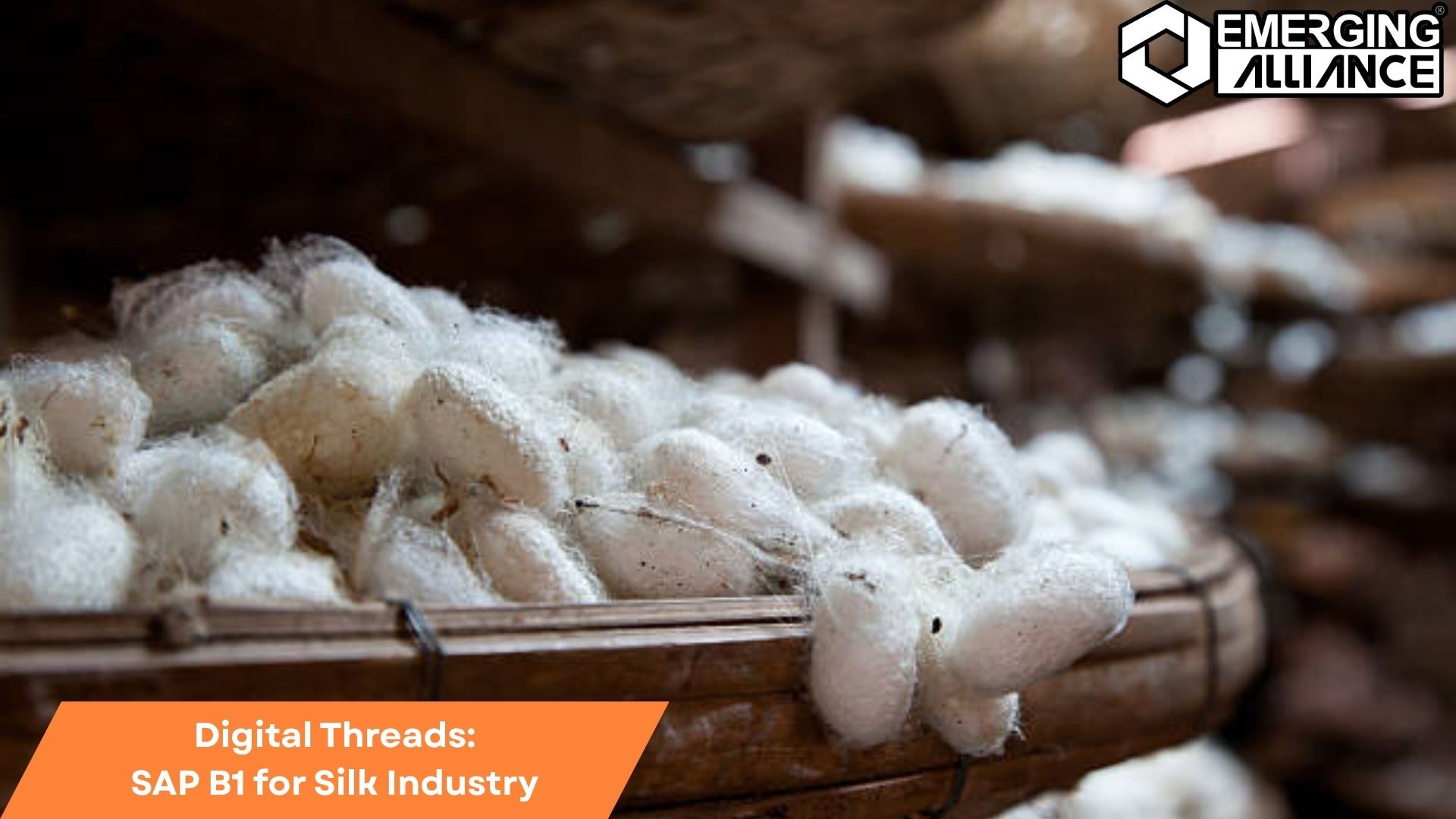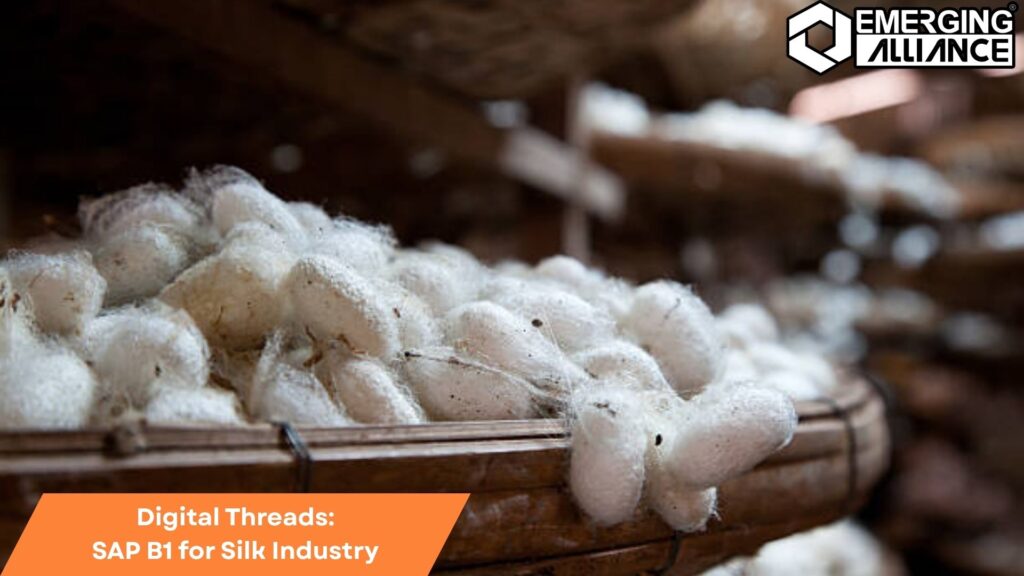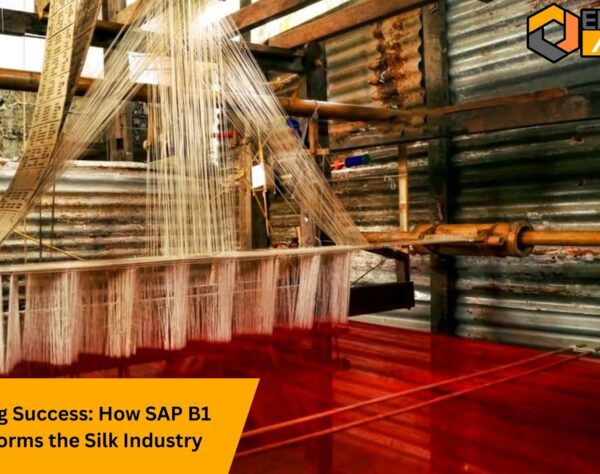
Digital Threads: SAP B1 for Silk Industry

Weaving Efficiency: How SAP Business One Transforms the Silk Industry
The silk industry is known for its elegance, craftsmanship, and complex production processes. From mulberry cultivation and cocoon reeling to dyeing, weaving, and distribution, each stage demands precision and coordination. As global demand rises and supply chains grow more intricate, traditional systems can no longer keep pace. This is where SAP B1—a powerful ERP solution—steps in to modernize operations.
SAP Business One for Silk Industry offers an integrated platform to manage every aspect of silk production and distribution. It digitizes workflows, improves data visibility, and enhances traceability—making it a perfect fit for an industry deeply rooted in tradition yet in need of digital transformation.
Why the Silk Industry Needs SAP B1
The silk industry operates in a landscape where artisan skill meets industrial demand. Manual tracking, disconnected departments, and lack of real-time data are common pain points. SAP B1 for Silk Industry helps businesses overcome these challenges by:
- Centralizing operations from raw silk procurement to finished fabric delivery
- Enhancing inventory control across multiple warehouses
- Automating production and quality management workflows
- Supporting detailed batch and lot tracking for transparency
- Enabling smarter decision-making through live dashboards and analytics
As a result, silk manufacturers, exporters, and traders gain agility and accuracy—two critical drivers of success in today’s textile market.
Key SAP Business One Features Tailored for the Silk Industry
Here’s how SAP Business One for Silk Industry empowers businesses across the value chain:
1. Raw Material & Supplier Management
Track mulberry leaf procurement, cocoon purchases, and vendor performance with detailed supplier records and pricing histories.
2. Production Planning
Automate production stages including reeling, twisting, dyeing, and weaving. Use SAP B1 to generate work orders, allocate resources, and monitor progress in real time.
3. Inventory & Warehouse Control
Manage inventory for threads, dyes, chemicals, and finished goods. SAP Business One offers barcode integration, reorder alerts, and warehouse transfer tools.
4. Quality Assurance
Define quality checkpoints for yarn strength, color fastness, and weave consistency. SAP Solutions for Silk Industry ensure non-compliant batches are flagged early.
5. Sales & Distribution
Streamline the order-to-delivery process. With SAP B1, you can track customer orders, delivery status, and manage bulk or custom shipments with ease.
6. Financial Management
Link production costs to financial reports. Generate invoices, manage GST, and view profitability per order or product line.
With these features, SAP Business One becomes more than a software—it acts as a digital backbone for silk enterprises.
How SAP B1 Enables Traceability in the Silk Industry
In a global market increasingly focused on transparency and sustainability, traceability is non-negotiable. SAP B1 for Silk Industry provides batch-level tracking from raw silk to finished garment. This helps businesses:
- Meet export documentation requirements
- Build consumer trust with verified supply chain transparency
- Ensure compliance with industry certifications and environmental standards
Whether you’re supplying to local boutiques or international fashion houses, SAP Solutions for Silk Industry ensure every meter of fabric is traceable, compliant, and accountable.
The Role of SAP Business One in Sustainability and Compliance
Eco-friendly practices and regulatory compliance are growing priorities for silk manufacturers. SAP Business One for Silk Industry helps businesses monitor and report on:
- Water and chemical usage in dyeing units
- Energy consumption in reeling and weaving
- Waste management and recycling processes
With built-in audit trails and real-time monitoring, SAP B1 ensures that sustainability isn’t just a goal—it’s part of your operational DNA.
Integration Capabilities with SAP B1
Modern silk businesses often rely on external tools for e-commerce, logistics, or payroll. SAP B1 offers seamless integration with third-party applications, allowing for:
- Real-time data syncing with POS systems or online marketplaces
- Automated shipment tracking with logistics providers
- Payroll and attendance tracking integration for workforce management
An experienced SAP partner can customize these integrations to meet specific business needs, ensuring smooth cross-platform workflows.
Real-World Success: SAP B1 in Action
A large silk exporter in Karnataka implemented SAP Business One for Silk Industry to overcome issues like excess inventory, missed orders, and poor batch traceability. Post-implementation results included:
- 35% reduction in order processing time
- 25% improvement in on-time deliveries
- Full visibility from cocoon to fabric
This success underscores the value of choosing a capable SAP Solution Provider for Silk Industry operations.
Why Work with a Dedicated SAP Solution Provider
While SAP B1 is a robust platform, its impact multiplies when implemented by an experienced SAP Solution Provider familiar with textile and silk workflows. These experts ensure:
- Industry-specific customization
- Seamless data migration and employee training
- Ongoing support and updates
The right partner helps you unlock the full potential of SAP Solutions for Silk Industry, driving efficiency, profitability, and competitive edge.
Final Thoughts
In an era where tradition meets technology, the silk industry stands at a critical crossroads. To thrive, it must evolve—and SAP B1 provides the ideal roadmap. With its powerful features, tailored modules, and seamless integrations, SAP Business One for Silk Industry empowers businesses to weave smarter, more sustainable, and more scalable operations.
From farmers and dyers to exporters and retailers, every stakeholder benefits when operations are unified under a single digital thread. With SAP Solutions for Silk Industry, it’s time to embrace transformation—one digital strand at a time.
FAQs
1. How does SAP B1 support traceability in the silk industry?
SAP B1 offers batch-level tracking of materials and production processes, enabling complete transparency from cocoon to finished fabric.
2. Can SAP Business One handle multiple production stages like reeling, dyeing, and weaving?
Yes, it can automate and monitor each stage with specific work orders, resource allocation, and real-time tracking.
3. What makes SAP Business One ideal for silk industry SMEs?
Its modular structure, scalability, and textile-specific configurations make it affordable and effective for small and mid-sized silk businesses.
4. Does SAP B1 help manage raw silk and chemical inventory?
Yes, it tracks inventory in real time, supports barcode scanning, and sets reorder levels for raw silk, dyes, and chemicals.
5. Can SAP Business One generate compliance and sustainability reports?
Absolutely. It tracks data on energy usage, waste, and process compliance to generate sustainability and audit reports.
6. How does SAP B1 improve export operations in the silk sector?
It manages order processing, packing, documentation, and shipment tracking, streamlining global trade logistics.
7. Is SAP Business One customizable for silk cooperatives or federations?
Yes, SAP B1 can be tailored to support centralized procurement, member management, and performance tracking.
8. Does SAP B1 support mobile access for on-site inventory and QC checks?
Yes, mobile-friendly interfaces allow real-time updates from warehouses, production floors, and quality labs.
9. Can SAP B1 integrate with existing looms or textile machinery data systems?
Through IoT or third-party integration, SAP B1 can capture and utilize machine data for better performance insights.
10. What role does a solution provider play in successful SAP B1 implementation?
A specialized provider ensures proper configuration, training, support, and ongoing optimization tailored to the silk industry.




